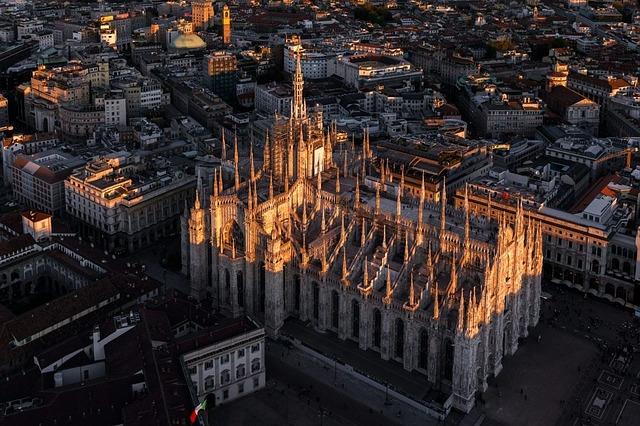Architectural landmarks stand as testaments to human creativity, innovation, and the desire to push the boundaries of design. From ancient wonders to modern marvels, these structures capture the essence of their respective periods and leave an indelible mark on the landscapes they grace. Let’s embark on a journey to explore some of the world’s most iconic architectural landmarks, each telling a unique story of architectural prowess and cultural significance.
-
The Great Pyramid of Giza, Egypt:
-
A marvel of ancient engineering, the Great Pyramid is the last of the Seven Wonders of the Ancient World still standing.
-
Built over 4,500 years ago as a tomb for Pharaoh Khufu, its precision in construction continues to intrigue architects and engineers.
-
-
The Taj Mahal, India:
-
An enduring symbol of love and architectural splendor, the Taj Mahal was built in the 17th century by Emperor Shah Jahan in memory of his wife Mumtaz Mahal.
-
Its white marble facade, intricate detailing, and symmetrical gardens make it a UNESCO World Heritage Site and an iconic representation of Mughal architecture.
-
-
The Eiffel Tower, France:
-
Designed by Gustave Eiffel for the 1889 Exposition Universelle, the Eiffel Tower has become an unmistakable symbol of Paris and France.
-
The innovative use of iron and its lattice structure made it a groundbreaking engineering achievement of the 19th century.
-
-
The Colosseum, Italy:
-
A colossal amphitheater that once hosted gladiatorial contests and public spectacles in ancient Rome.
-
Its elliptical design and use of arches have influenced countless stadiums and arenas throughout history.
-
-
The Sydney Opera House, Australia:
-
Designed by Jørn Utzon and completed in 1973, the Sydney Opera House is an iconic example of modern expressionist architecture.
-
Its distinctive shell-like structures and location on the Sydney Harbor make it a symbol of Australia’s cultural identity.
-
-
The Burj Khalifa, United Arab Emirates:
-
Soaring to over 828 meters, the Burj Khalifa in Dubai is the world’s tallest building.
-
Its sleek, modern design and innovative engineering reflect the ambition and dynamism of contemporary architecture.
-
-
The Golden Gate Bridge, United States:
-
A masterpiece of Art Deco design, the Golden Gate Bridge spans the entrance to the San Francisco Bay.
-
Completed in 1937, its distinctive color, scale, and graceful lines make it an enduring symbol of engineering excellence.
-
-
The Beijing National Stadium (Bird’s Nest), China:
-
Created for the 2008 Summer Olympics, the Bird’s Nest is a collaborative architectural effort led by Herzog & de Meuron.
-
Its intricate lattice structure and unconventional form showcase a fusion of art and technology.
-
-
The Sagrada Família, Spain:
-
Antoni Gaudí’s magnum opus, the Sagrada Família in Barcelona, is a basilica known for its surreal architecture and organic forms.
-
Construction began in 1882, and its ongoing development is a testament to the dedication of architects and craftsmen over generations.
-
-
The Gateway Arch, United States:
-
Designed by Eero Saarinen and completed in 1965, the Gateway Arch in St. Louis is an arch of unparalleled elegance.
-
Symbolizing the westward expansion of the United States, its stainless steel structure stands as an icon of mid-20th-century design.
-
Conclusion:
Architectural landmarks not only shape the skylines of cities but also embody the spirit of the cultures and societies that created them. From ancient wonders to contemporary marvels, these iconic structures serve as beacons of human achievement, inviting admiration and awe across the globe. As we marvel at these architectural masterpieces, we recognize the enduring power of design to inspire, connect, and transcend the boundaries of time.



